What is the filiform corrosion
Filiform corrosion (FFC), also known as underfilm corrosion, is a type of corrosion that occurs in coated metals, usually under organic coatings like paint. It appears as small, worm-like filaments on the surface of the metal, and spread under a protective coating or paint film, which can eventually cause the coating to fail and expose the underlying metal to further corrosion.
Filiform corrosion is initiated by the penetration of moisture and oxygen through a damaged or porous coating, which creates the perfect environment for corrosion to occur. The corrosion process begins at a microscopic level and can rapidly spread, causing extensive damage to the surface of the metal.
This type of corrosion is mainly found in marine environments, where saltwater and high humidity are prevalent. It can also occur in areas with high levels of pollution, such as industrial regions and urban areas.
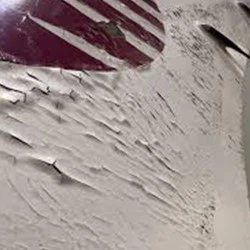
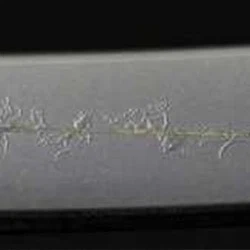
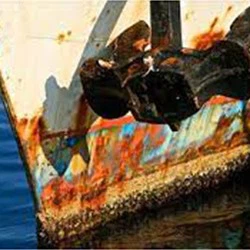
To prevent or minimize filiform corrosion, it's important to apply high-quality coating systems to metal surfaces that provide effective protection against moisture and oxygen penetration. Additionally, regular maintenance and inspection of coated surfaces can help detect and address any potential issues before they become more severe.
Overall, filiform corrosion is a type of corrosion that can be highly damaging to metal surfaces if left untreated. It's important to understand and identify the signs of filiform corrosion to prevent further damage and ensure the longevity of metal surfaces.
The influencing factors of filiform corrosion
Filiform corrosion is usually caused by inadequate preparation of the metal surface before applying the coating, which allows moisture to penetrate the coating and react with the metal surface. This reaction produces iron oxide, which breaks down the coating and causes the filiform corrosion. Other factors that can contribute to the development of filiform corrosion include exposure to saltwater, acidic or alkaline environments, high humidity, and high temperatures.
- Humidity is one of the critical factors that affect FFC. High humidity conditions can increase the likelihood of FFC occurring. The presence of moisture on the metal surface is essential for the initiation of FFC. Moisture can also create an oxygen-rich environment that can speed up the corrosion process. Therefore, controlling the humidity near the metal surface is crucial in preventing FFC.
- Temperature is another significant factor that affects FFC. FFC is more likely to occur at high temperatures. At elevated temperatures, the coating on the metal surface may swell, leading to cracks and defects in the coating and allowing moisture and other corrosive elements to penetrate the surface. Therefore, monitoring the environmental temperature of metal surfaces is crucial in preventing FFC. The joint action of temperature and humidity on the interaction of filiform corrosion is more significant than the effect of single humidity, with temperature 40 ℃, relative humidity 70% and temperature is 20 ℃, relative humidity 95% two combinations of filiform corrosion environment is created for the most appropriate.
- The oxygen content in the surrounding environment also plays a vital role in FFC. Corrosion is an electrochemical process that requires the presence of oxygen molecules. An excess of oxygen molecules in the surrounding environment can accelerate the rate of FFC. Atmospheric oxygen content (21%) is generally considered to be the lowest concentration for filamentous corrosion. Filiform corrosion is most effectively promoted by oxygen content of about 50%. The research shows that the filamentous corrosion can be accelerated rapidly when the oxygen content is increased to more than 35%. The use of inert gases in the atmosphere around the metal surface can help to prevent FFC by reducing the level of oxygen in the environment.
- Coating properties are also essential in preventing FFC. Poor quality coatings, such as those that contain air pockets, may allow moisture to penetrate the surface, leading to corrosion. Coatings that are too porous or too thick can also increase the likelihood of FFC. Therefore, it is essential to select a coating that provides adequate protection against FFC and to ensure that the coating is applied correctly.
- Finally, metal surface treatment can significantly impact FFC prevention. Surface preparation, such as cleaning and removing any contaminants before coating, can prevent FFC. Chemical treatments can also be used to create a barrier between the metal surface and the coating, preventing moisture and other corrosive elements from penetrating the surface.
In conclusion, several factors influence the occurrence of FFC, including temperature, humidity, oxygen content, coating properties, and metal surface treatment. By implementing proper environmental controls, selecting high-quality coatings, and conducting thorough metal surface preparation, FFC can be prevented.
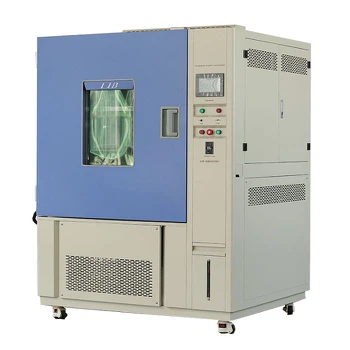
Filiform Accelerate Test Chamber

Filiform Accelerated Corrosion Tester
With Filiform Accelerate Corrosion Test Chamber , you can test the growth of FFC at different temperature, humidity and salt concentrations.
LIB Salt Mist Corrosion Test Chamber for Filiform Corrosion
-
LIB Salt Mist Corrosion Test Chamber
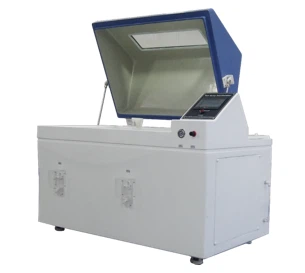
In LIB's Salt Mist Corrosion Test Chamber, the first 6 hours simulate copper‑accelerated acetic acid salt spray (CASS):
Solution: 5 % NaCl + 0.26 g/L CuCl₂ at pH 3.1–3.3
Temperature: 35 ± 2 °C (PT100 Class A sensor accuracy ± 0.5 °C)
Spray Pressure: 83 kPa
Deposition Rate: 1–2 mL/80 cm²/h
The robust spray delivery system-including corrosion‑resistant quartz nozzles and precise pH control-ensures uniform fog density. Automatic water‑level monitoring and dry‑burn protection maintain uninterrupted operation, so you achieve full compliance with ISO 9227 and reliable starting conditions for filiform growth.
-
LIB Temperature and Humidity Test Chamber

Stage Two – High‑Temperature, High‑Humidity Exposure
Place the scribed sample into LIB's Temperature & Humidity Environmental Chamber to drive filiform propagation under sustained stress:
Temperature: 65 ± 1 °C
Humidity: 85 ± 3 %RH
Airflow: 6–24 m/min via integrated centrifugal fan
Why LIB's Chambers Workflow Delivers Superior Results?
- Unmatched Control & Uniformity
LIB's chambers use PT100 Class A temperature sensors with ±0.001 °C resolution, along with precision RH controllers that hold humidity within ±2.5 %RH. In the salt mist chamber, corrosion-resistant quartz nozzles deliver a fine, uniform fog at a deposition rate of 1–2 mL/80 cm²/h, while pH regulation ensures consistent spray chemistry. This level of control eliminates hot spots, uneven fog density, and environmental drift-ensuring your corrosion test data are accurate and reproducible.
- Speed Without Compromise
LIB's temperature and humidity chamber features industry-leading ramp rates: 3 °C/min heating and 1 °C/min cooling, allowing rapid transitions between test cycles. In the salt spray system, automated water-level detection and dry-burn protection minimize downtime. Together, these features let your lab run more tests in less time, optimize coating formulations faster, and shorten development cycles without sacrificing test integrity.
- Long-Term Reliability
Constructed with SUS304 stainless-steel interiors and A3-steel exteriors, LIB's temperature and humidity chamber is built to resist corrosion over long test durations. Integrated centrifugal fans provide steady airflow between 6–24 m/min, supporting consistent filiform propagation over 672-hour test sequences. Self-cleaning water filtration systems reduce maintenance needs, enabling extended, unattended operation for both short- and long-term studies.
- Comprehensive Safety & Service
Each chamber includes safety measures such as leakage current protection and phase-sequence monitoring. The modular design offers easy-access service ports and automatic system diagnostics. LIB backs every unit with a 3-year warranty, lifelong technical support, and access to globally distributed spare parts-giving you confidence in both your equipment and your data.
- Elevate Your Corrosion‑Testing Program
By combining LIB's Salt Mist Corrosion Test Chamber for accelerated CASS exposure with its Temperature & Humidity Test Chamber for sustained filiform propagation, you gain a turnkey solution tailored to SAE J2635 and ISO 9227 standards. This dual‑chamber approach optimizes accuracy, reduces cycle time, and delivers data you can trust-enabling your coatings to perform flawlessly in the field.
Contact LIB today to design a customized Filiform Corrosion Test setup that meets your toughest R&D, quality‑control, and compliance requirements.



